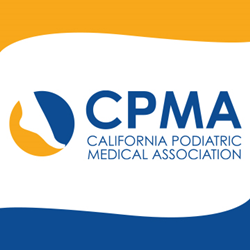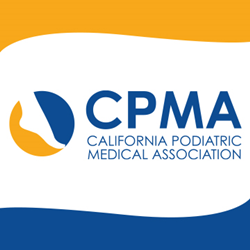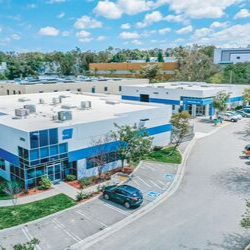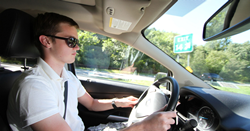
Doctors Dedicated to Keeping Californians on Their FEET!
“Fall death rates in the United States increased by 30% between 2007 and 2016. If rates continue to rise at this pace, it is estimated that there could be as many as 7 FALL DEATHS every hour by 2030.”
SACRAMENTO, Calif. (PRWEB)
September 20, 2019
Monday, September 23 is the first day of Fall, with its crisp mornings, warm afternoons and trees arrayed in canopy coats of brilliant orange, red and yellow leaves. The first day of Fall is also the beginning of Fall Prevention Awareness Week, created to raise awareness about the causes and costs of falls, and how to reduce and prevent them.
Everyone falls at some point in life, whether while learning to walk, skate or ski; tripping over shoelaces, cracks in the sidewalk or slipping on a wet spot or patch of frost or ice. Most will get up somewhat embarrassed (and maybe slight bruised), but thinking no harm, no foul. For others – especially seniors 65 and older – falling poses a much greater risk for serious injuries, hospitalization and complications.
According to the U.S. Centers for Disease Control and Prevention (CDC):
- One in four Americans aged 65+ falls each year.
- Every 11 seconds, an older adult is treated in the emergency room for a fall; every 19 minutes, an older adult dies from a fall.
- Falls are the leading cause of fatal injury and the most common cause of nonfatal trauma-related hospital admissions among older adults.
- One out of five falls causes a serious injury such as broken bones or a head injury
- Falls result in more than 2.8 million older people treated in emergency departments for fall injuries, including over 800,000 hospitalizations and more than 27,000 deaths.
- Each year at least 300,000 older people are hospitalized for hip fractures, with more than 95% of these resulting from falling.
- In 2015, the total cost of fall injuries in the United States was $50 billion. Medicare and Medicaid footed 75% of these costs.
- The financial toll for older adult falls is expected to increase as the population ages and may reach $67.7 billion by 2020.
- Fall death rates in the United States increased by 30% between 2007 and 2016. If rates continue to rise at this pace, it is estimated that there could be as many as 7 FALL DEATHS every hour by 2030.
“While these numbers are daunting, they are not destiny,” said podiatric foot and ankle specialist Holly Spohn-Gross, DPM. “The vast majority of falls are PREVENTABLE!”
“Falls are caused by a combination of factors, some external – like loose rugs, sidewalk cracks and ill-fitting footwear. Others can be internal health-related causes such as muscle deterioration and certain chronic conditions like cardiovascular disease and neuropathy (frequently caused by diabetes), which can cause numbness, weakness or burning in the feet. These sensory issues can cause the feet not to feel where they are stepping, and, in turn, can lead to falls,” says Dr. Spohn-Gross, Vice President of the California Podiatric Medical Association (CPMA).
“The CDC and various studies have found that foot pain (and overall foot health) is one of the leading causes of falls amongst seniors, which makes perfect sense when you consider that our feet are our foundation and source of our mobility,” Dr. Spohn-Gross said.
“The average person will walk about 100,000 miles (more than 4 times around the earth) in their lifetime and—depending on whether standing, walking or running—puts anywhere from 2 to 3 times their body’s weight on their feet daily.
“It really is a bio-engineering marvel that such small and delicate bones are able to support and transport the loads they are expected to carry and move during the lifetime of the person standing on them; all of which makes the human foot even more remarkable,” says Dr. Spohn-Gross, a board-certified podiatric foot and ankle surgeon.
“However, all of this load-bearing takes a tremendous toll on our feet over our lifetimes. And, as we age, so do our feet. They tend to flatten and widen with the loss of elasticity in their tendons and ligaments. The fat pads in the bottom of our feet, (which help cushion the force of our weight on our joints – ankles, knees, hips and spine) tend to thin with age, resulting in less cushioning and support. Other age-related factors impacting the health of our feet include loss of strength and flexibility, increases in painful foot conditions like arthritis, bursitis, bunions, corns, calluses and diabetic nerve pain. All of which can affect a senior’s gait (the way one walks) and their ability to maintain balance and coordination.
“Seniors can take proactive steps to reduce their risk of falling by developing a fall prevention plan. The first step in developing a fall prevention program should be a visit to a podiatric foot and ankle specialist,” continued Dr. Spohn-Gross.
“A podiatric physician will take a medical history, asking questions as to current medications you might be taking; if you have experienced any dizziness or blurred vision; have you recently fallen, and or, do you fear falling? It is critical that patients be truthful when answering these questions for the doctor to make an accurate evaluation, fall assessment, and to develop a treatment and prevention plan.
“A podiatric physician will also perform a physical that will include a thorough examination of the patient’s feet. When was the last time your healthcare provider examined your feet? The examination will include checking for abnormalities and pain. Depending on the condition(s) found, your podiatric physician may prescribe medications or recommend surgical intervention. He or She will also evaluate the patient’s gait – looking to see if the feet roll to the outside or inside when the patient walks; does the patient drag or shuffle their feet while walking; does the patient limp or favor one foot over the other? They will also evaluate the patient’s footwear for size, fit and wear patterns.
“Many seniors prefer backless shoes or loafers a size larger than their actual size, because they are easier to put on and take off. However, such footwear provides little support, can cause a tendency to shuffle while walking – which can actually increase the risk of falling.
“A podiatric physician can make footwear recommendations that can help to reduce falls, such as shoes that provide a lot of contact with the ground, nonskid soles with a good grip, are well cushioned, have low heels and fit properly.
“Seniors (and everyone really) should have their feet professionally measured each time they buy shoes, because the size and shape of your feet can change with aging or with changes to your health. Have both feet measured and buy for the larger foot. Because feet swell throughout the day, shop for shoes in the afternoon. Bring the socks/stockings that will be typically worn with the shoes. Try on both shoes and walk around the store. If the shoes are not comfortable don’t buy them. Shoes shouldn’t need to be broken in.
“Your podiatric physician might also recommend custom orthotics, (created from molds of the patient’s own feet) to address the patient’s specific foot issues, reduce pain and increase stability and balance. In addition, the doctor may also suggest a course of exercises to help strengthen the patient’s feet and increase their flexibility.
“He or she may recommend assistive devices, such as a cane or walker. While it might be tempting to pick those up at the local drug store, a podiatric foot and ankle specialist can make recommendations that are more appropriate to the patient’s specific needs; fit the device to them and provide instructions on how to properly use the device, thus further reducing the risk of falling.
“After falling, many seniors fear falling again, whether they were injured or not. This fear can result in depression and often leads to many seniors reducing their physical activities, which is exactly the wrong thing to do,” said Dr. Spohn-Gross.
“Stay active – a brisk 30-minute walk 5-days a week will help meet the CDC’s recommendation of 150 minutes of physical activity per week. Walking can also help with weight management, improve blood circulation and bone strength, and can also help improve your mood. Walking is easy to do, as well as being easy on the joints. It requires no special training or special equipment – except for a good, sturdy pair of walking shoes. In addition to keeping active:
- “Stop smoking and reduce alcohol consumption.
- “Eat a healthy diet.
- “Get enough sleep.
- “Keep bones healthy (a quarter of all the bones in the body are in the foot) by getting enough vitamin C and D.
- “See a podiatric foot and ankle specialist once a year for an annual foot health exam and fall assessment.
In addition to an annual podiatric medical examination to check foot health, perform a fall assessment and offering suggestions for a healthier lifestyle to help prevent falls, Dr. Spohn-Gross also provides recommendations to help seniors reduce falls in and around the home:
- “Wear shoes indoors. Harvard researchers have found that people who wore shoes indoors were less likely to suffer a serious injury from a fall than those who wore slippers, socks or went barefoot.
- “Secure or remove loose rugs.
- “Install grab bars in the tub, shower and next to the toilet.
- “Use nonslip mats in the tub and shower.
- “Place railings on both sides of the stairs.
- “Don’t leave clothes or shoes in the middle of the floor, or walkways.
- “Increase lighting inside and outside. Night lights and motion sensor lights are good options.
- “Make sure electrical cords and charging cable are tucked into the corner and not in pathways.
- “Cleanup liquid spills on the floor right away.
- “Store frequently access items (like food, dishes, clothing, etc.) within easy reach.
- “Do not stand on chairs or tables to reach objects. Use a “grab stick.” If you much use a step stool, invest in a sturdy, well built one with side rails.
- “Pets can also pose a fall risk. Put a bell on your pet’s collar; so that you will know where they are in the house
- “Consider a dog training course to help Fido walk on the leash without pulling
- “Put emergency numbers in your phone
- “Consider a monitored alert device service, especially if you live alone.
An avid runner and skier, Dr. Spohn-Gross is in private practice in Lake Isabella, CA.
To find a local licensed California Doctor of Podiatric Medicine please go to CalPMA.org
Sources:
CDC: “Don’t Fall Behind on Fall Prevention”
http://www.cdc.gov/features/falls-prevention-day/index.html
CDC: “Important Facts about Falls” http://www.cdc.gov/homeandrecreationalsafety/falls/adultfalls.html
National Council on Aging “Fall Prevention Facts” ncoa.org/news/resources-for-reporters/get-the-facts/falls-prevention-facts/
Harvard Health Letter: “Taking Care of Your Feet May Prevent Falls and Injuries”
http://www.health.harvard.edu/press_releases/taking-care-of-your-feet-may-prevent-falls-injuries
National Institute on Aging “Prevent Falls and Fractures”
http://www.nia.nih.gov/health/prevent-falls-and-fractures
Science Daily “Going Barefoot in the Home May Contribute to Elderly Falls” http://www.sciencedaily.com/releases/2010/06/100623085516.htm
American Podiatric Medical Association “Balance Boosting”
https://www.apma.org/balanceboosting
CPMA – Doctors Dedicated to Keeping Californians on Their FEET!
Founded in 1912, the California Podiatric Medical Association (CPMA) is the leading professional organization for California’s licensed doctors of podiatric medicine (DPMs). DPMs are podiatric physicians and surgeons, also known as podiatrists, qualified by their rigorous education, training and experience to diagnose and treat conditions affecting the foot, ankle and structures of the leg.














